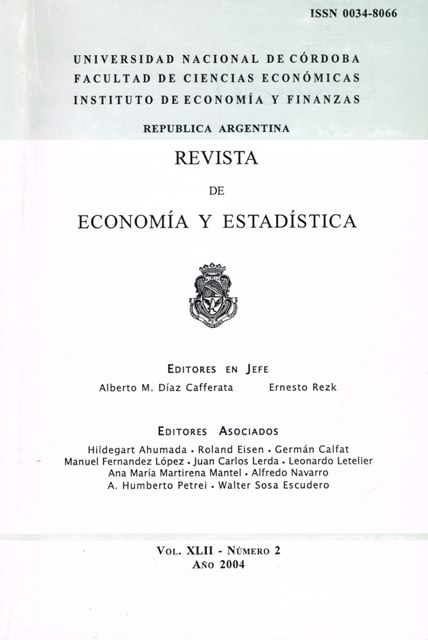Autoregressive vectors and the identification of monetary policy shocks in Argentina
DOI:
https://doi.org/10.55444/2451.7321.2004.v42.n2.3809Keywords:
vector autoregressions, monetary policy, monetary policy shocks, ArgentinaAbstract
In this paper we use Vector Autoregressions for the estimation of themacroeconomic effects of monetary policy in Argentina during the 1980´s and 1990´s. Special attention is given to problems associated with theidentification of monetary policy shocks due to potential omitted variablesbias, for which we propose a way to address this issue.Granger causality tests, impulse-response functions, variance decompositionsand simulated forecast errors show big structural differences between the1980's and 1990's. Nevertheless, there is evidence in both periods aboutpotential contractive effects of expansive monetary policies, in line withprevious results obtained using error correction models.
Downloads
Downloads
Published
Issue
Section
License
Copyright (c) 2004 Gastón Utrera

This work is licensed under a Creative Commons Attribution-NonCommercial-NoDerivatives 4.0 International License.
Authors who have publications with this journal agree to the following terms:
Authors retain their copyright and grant the journal the right of first publication of their work, which is simultaneously subject to the Creative Commons Attribution-NonCommercial-NoDerivatives 4.0 International License that allows third parties to share the work provided that its author and first publication in this journal are indicated.
Authors may adopt other non-exclusive licensing arrangements for distribution of the published version of the work (e.g. depositing it in an institutional telematic archive or publishing it in a monographic volume) as long as the initial publication in this journal is indicated.
Authors are allowed and encouraged to disseminate their work via the Internet (e.g. in institutional telematic archives or on their website) before and during the submission process, which can lead to interesting exchanges and increase citations of the published work. (See The Open Access Effect)














